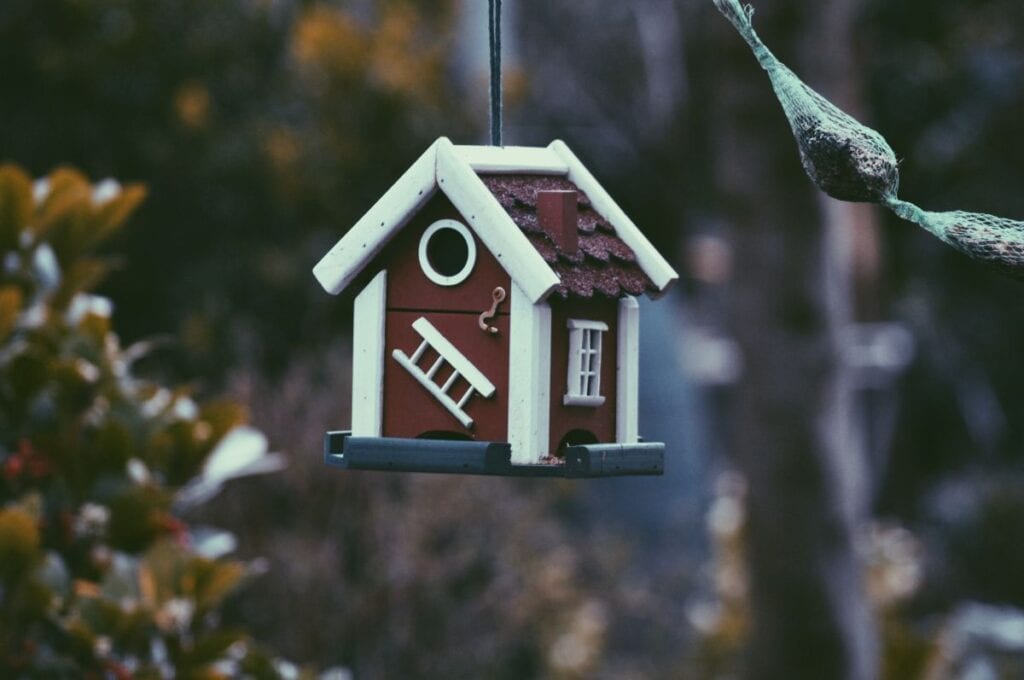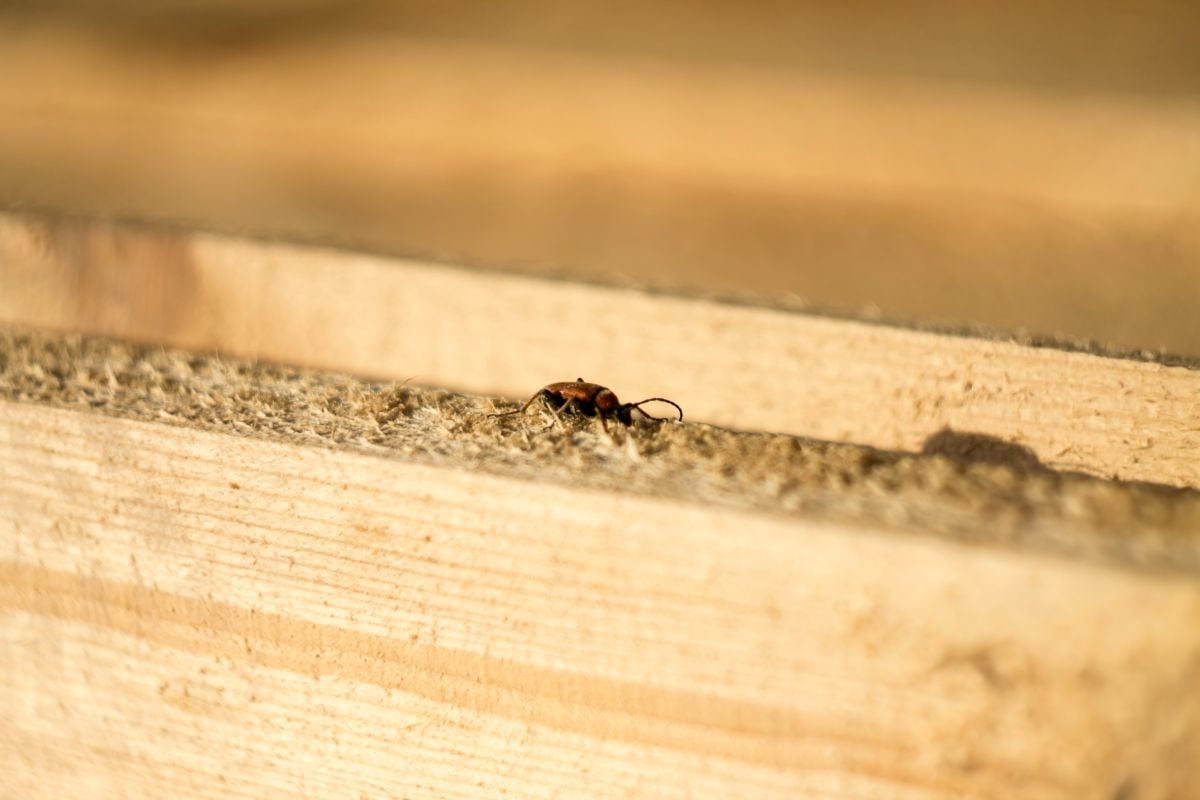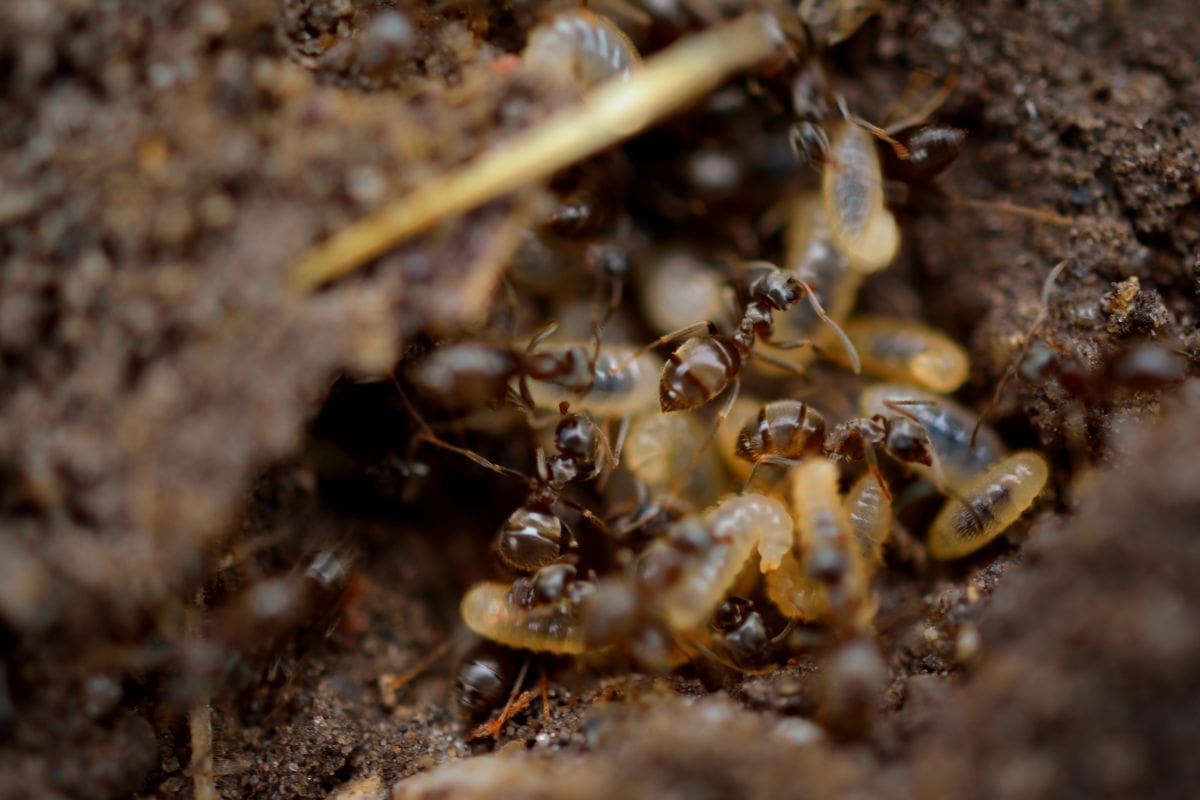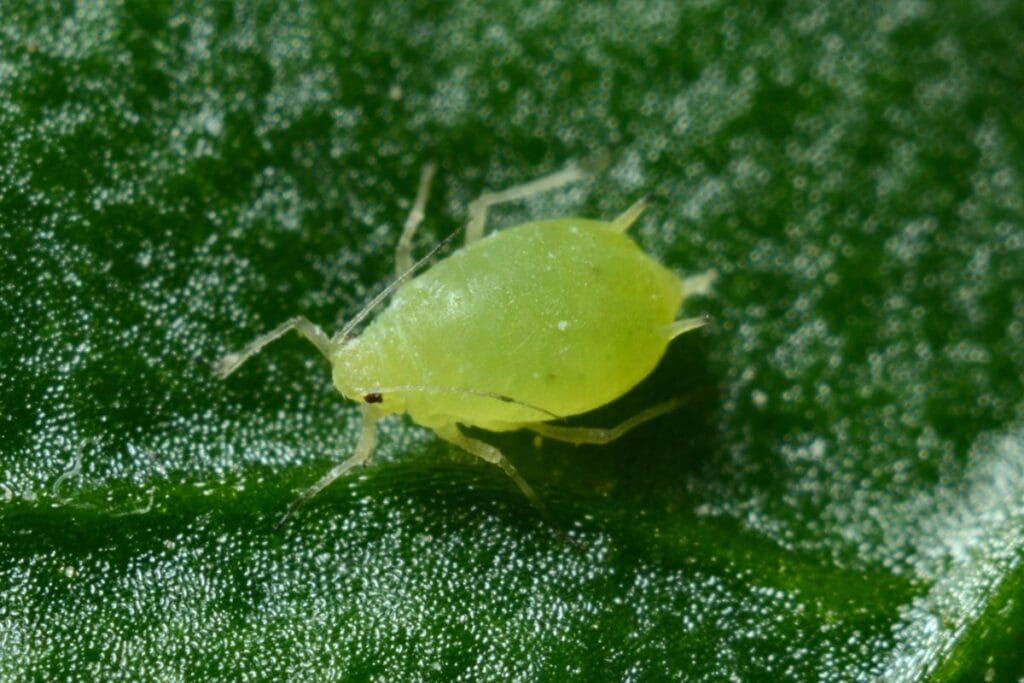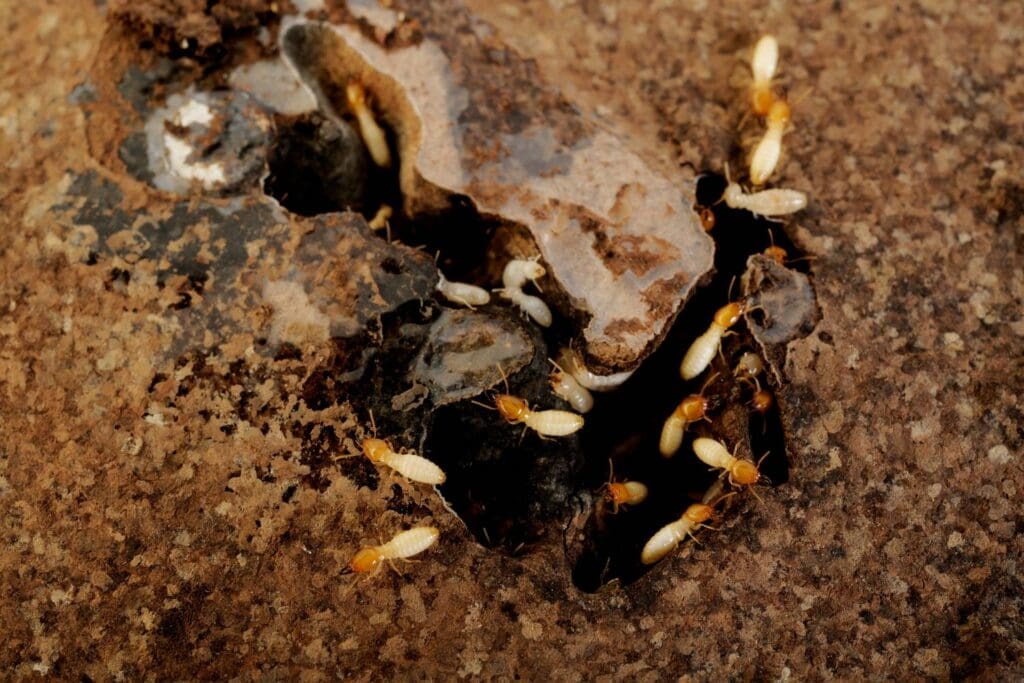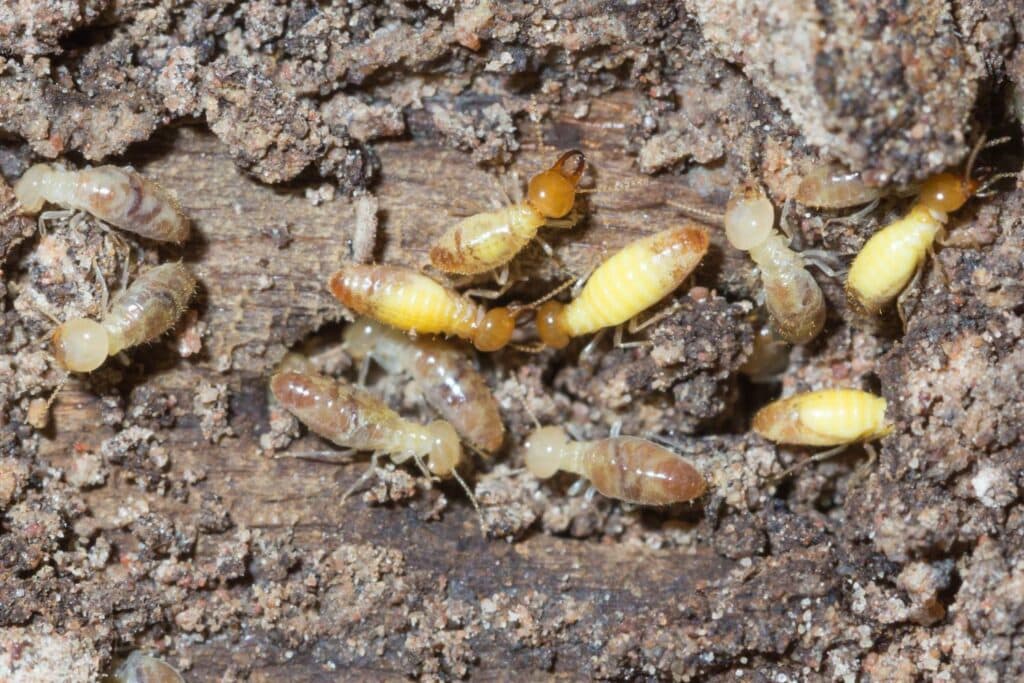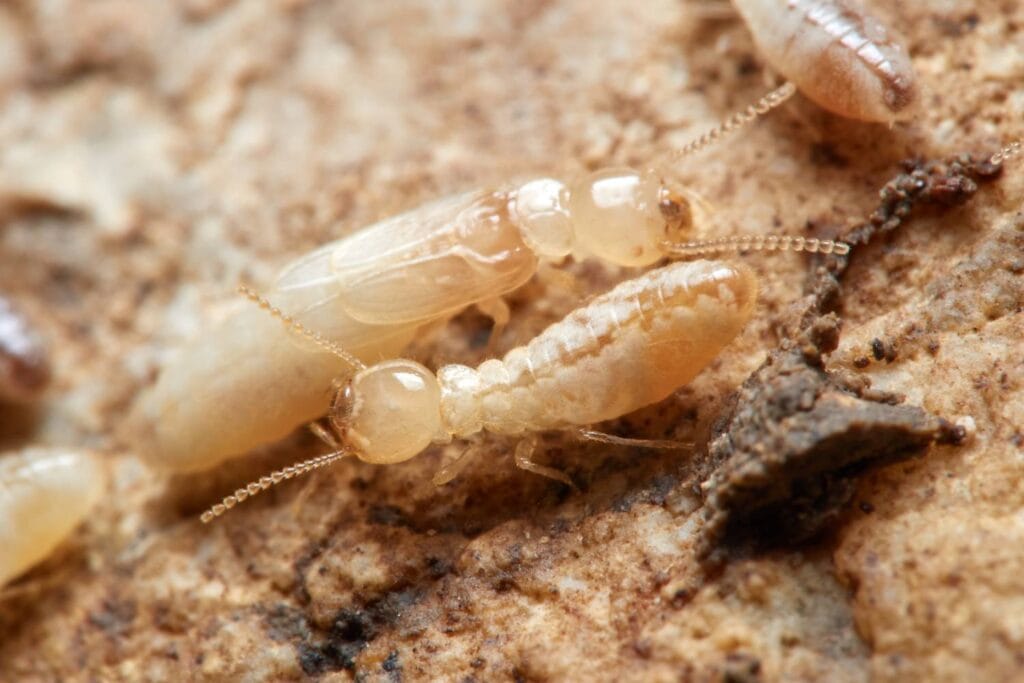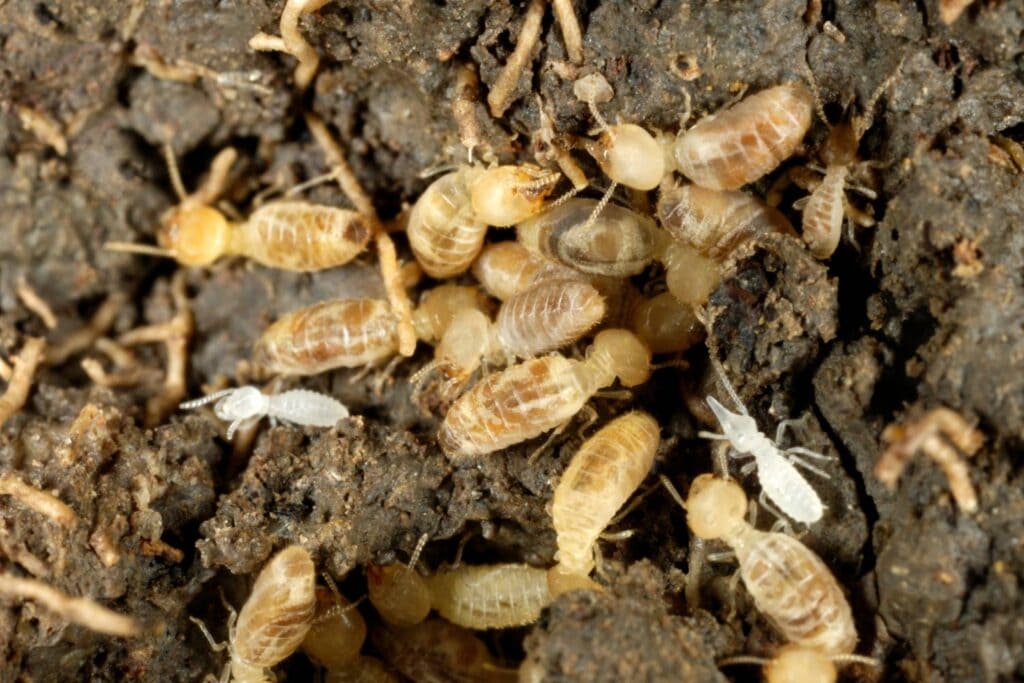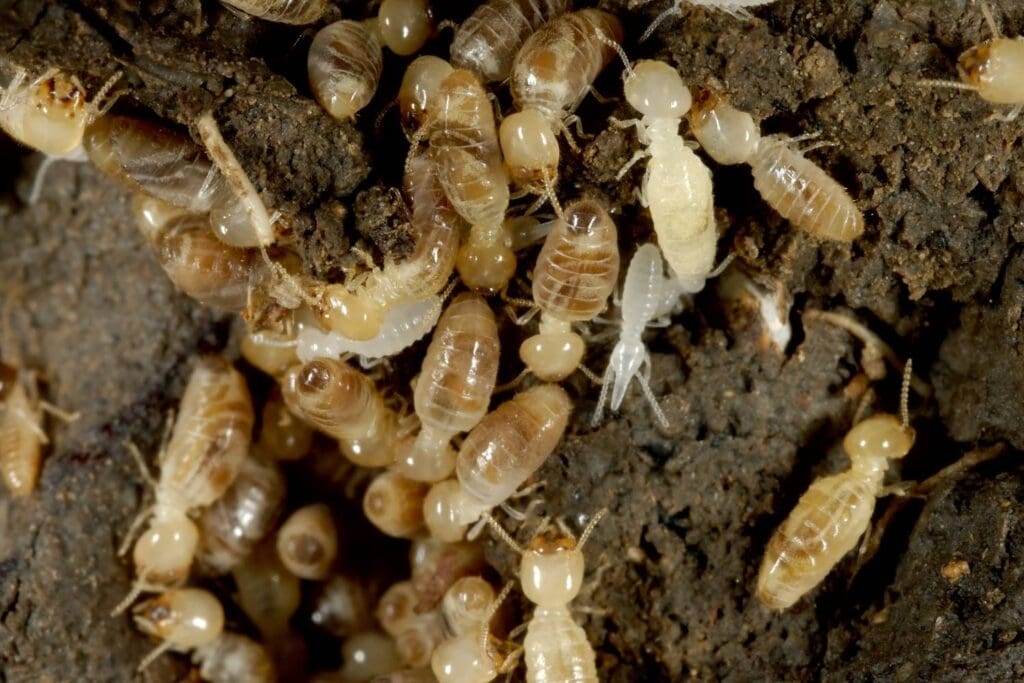The purchase of a home is among the most significant monetary commitments most people will ever make. Doing your research to ensure you're not investing in a property that will cost you more money is crucial. When looking to purchase a home, the presence of termite damage is a major issue.
Termites are incredibly destructive little insects. As they eat wood, they can weaken a home's framework and lead to costly repairs. Buyers should be wary of a home that termites have damaged. They can be concerned about the integrity of the building and the price of repairs.
You may take several precautions to lessen the impact of buying a home with termite damage. As a first step, schedule a professional inspection of the home. This will aid in locating potential termite damage and estimating the total damage caused by the pests.
You can fix it easily if the damage isn't too severe. However, more substantial repairs or even reconstruction of affected areas of the home may be necessary in the event of severe damage. Sometimes it's better to give up on a property and move on.
This article will help you decide whether or not to purchase a home that termites have damaged. We'll provide you all the information you need to know whether or not this is the right course of action.
In this blog post, we'll examine termite damage and discuss the various forms it can take and what to do if you discover it. We will also discuss the pros and cons of purchasing a home with termite damage and the estimated cost of repairs. To sum up, if you're considering purchasing a home damaged by termites, you should read this page. We'll provide you all the information you need to determine if this is really the best choice.
Learning To Recognise Termite Damage
Termites, which are very little and very pale, are insects that eat cellulose-based materials like wood and paper and cardboard. They're colonial organisms that, if left unchecked, may seriously harm whatever wooden constructions they find.
Termites typically consume cellulose, which can be found in structural wood. They eat wood from the inside, which can cause serious problems for a building's stability over time. Hollowed-out wood, tunnels on exterior walls or mud tubes, and mounds of little wings or droppings are all telltale signs of termite devastation.
Preventing future structure deterioration and related safety issues requires prompt termite damage remediation. After an inspection of the affected area, treatment options for eradicating the termites and repairing the damage they've caused can be determined by a professional pest control firm.
To protect your home against termites, prevention is equally important. Wooden buildings should be inspected frequently; fissures in foundations and walls should be sealed; and woodpiles and other cellulose-based items should be kept away from buildings.
Buying A House: Are Termites A Deal Breaker?
When you first started looking for a home, you probably had high hopes. Initially, you probably thought it would be possible to discover a house that meets all or nearly all of your requirements.
However, it's uncommon for people to stumble upon a dwelling that's ideal in every way and in pristine condition. Instead, most people locate a house they love, only to learn during the inspection process that it needs several costly repairs.
Even if there are minor problems, they shouldn't sway your selection. There may be other issues that prevent a purchase from happening, such as major defects that reduce the home's value or necessitate costly repairs. Where therefore do termites fall within the spectrum of house inspection-uncovered issues? Are these issues major roadblocks or nitpicks?
Termites are a major problem, but they shouldn't dissuade you from buying a house. You can protect your family and your new home from the dangers of a termite infestation by following the steps outlined below.
Get a Termite Inspection Done by the Experts
A professional pre-purchase building and pest inspection is your best bet for discovering a termite infestation in a home you're thinking about purchasing. A problem, if there is one, can be evaluated by an inspector. The inspector can also assess the present level of termite damage. When the extent of the termite damage is clear, you can use the information in the report to make informed decisions.
Consult the Observer About Your Treatment Options
After thoroughly inspecting termites, you and the inspector can discuss your alternatives for eliminating the problem. Several alternatives exist, each tailored to the specific species and level of infestation of the termites in question. The termite expert can advise you on the best strategy, but the two most common are baiting and spraying.
Negotiate With The Seller
If you consult a termite inspector and investigate your treatment options, you'll have the information you need to negotiate with the seller. Termite infestation and damage can be dealt with after the purchase has been made at a reduced price that can be negotiated.
We suggest the seller take care of the damage and the termite issue. Going this route, however, requires a second inspection to confirm that the pests have been eradicated.
Don't let the possibility of termites prevent you from purchasing a home that could be perfect for you in every other way. Make sure you hire a licenced termite inspector to give you the entire picture of what you're getting into.
Learn From The Pre-Purchase Pest Inspection
A pre-purchase pest examination is significantly more in-depth than a typical termite inspection since it looks for more timber pests like borers and signs of wood rot. However, termites are the most significant pest.
Your ideal home could be weatherboard, masonry, or metal, but termites can still invade and eat away any wood components. For example, termites can enter homes with metal frames and eat the wood in the floors, doors, and architraves.
A pre-purchase pest inspection is a public report. Thus, the inspector cannot move items or access restricted areas. A more "intrusive" investigation, such as rearranging furniture to access hidden spaces or penetrating walls and floors with specialised equipment, may be recommended in addition to any findings reported by the inspector.
The seller's approval of these additional inspections is, however, required. Sellers sometimes hide equipment, boxes, or furniture to prevent inspectors from accessing certain areas of the home. If they say no, that means the deal can't go through. The inspection will look at these three main points:
- The presence or absence of wood-eating insects in the building and its environs
- Have pests caused harm to the building or the surrounding land?
- Could anything put the structure in danger for future termite infestations?
How Can Termites Be Prevented?
A termite infestation can be difficult to manage if you aren't careful, but the techniques below can help.
- Dry things out and don't let dampness build up: Fix any water fixtures that may be leaking. This will help reduce the humidity and make it less likely that termites will be drawn in from below.
- Remove any wood sources near your property, including building materials, firewood, and so on; termites love wood and feast on it if given a chance. Don't put compost bins near your house, either. All of these things can cause pests to invade your house and yard.
- Termites love to nest in old wood. Therefore, removing any discarded materials or plants near the house's base is important. Keep it secure away from your house and off the ground if possible. Termites prefer to build their nests in the crooks and crevices of decaying tree trunks and limbs. Take them off as soon as possible following a trimming. It's important to maintain a dry and clean environment at home.
- You may prevent termites from entering your home by sealing any openings they might find, such as those in walls, foundations, pipes, and faucets.
- Termites leave behind grains if they eat the wood from the outside and hollow areas if they eat it from the inside. Therefore, it's important to recognise the indicators. It's a red flag if your wooden objects make a hollow noise or leave a visible grain pattern behind them. The presence of mud tunnels, discarded wing fragments, or faeces of a microscopic size are all possible signs of a termite infestation.
- Mulches used in landscaping have moisture-retaining qualities. Hence their use should be restricted. Termites thrive in mulches due to the high humidity and moisture levels. If your mulch is made of wood bark or sawdust, the problem will only get worse.
- Think about getting a professional pest control agency to check for pests and termites: Termites can enter a building or a residence through any number of cracks or holes hidden beneath the surface. Protect your homes from termite damage by hiring a competent pest and termite inspection agency and using termiticides for prevention.
Protecting your property from termites requires constant vigilance, even if you take preventative steps as soon as possible. As was previously mentioned, there are numerous things you can do to protect your house, such as getting rid of termite food sources in your garden and doing frequent termite inspections of your home's most vulnerable regions.
In addition, domestic pest control services and termite damage repair consultations are essential for the safety of your property. They have received in-depth instruction in termite identification and the most effective methods, equipment, and pesticides for warding off these pests. Moreover, and most importantly, they are familiar with the dangers specific to your area and the best ways to combat termites.
What Are The Alternatives To Buying A Termite-Damaged House?
Consider your options before purchasing a home with termite damage. If you're looking for options, how about these?
Walk Away
If the termite damage is severe or the repair expense is too high, this may be the best course of action. However, a property that would need extensive maintenance and could become a financial burden should be avoided.
Negotiate With The Seller
Negotiate with the seller to lessen the price or get pre-sale repairs done if you're still interested in the house. This could be useful in offsetting the expense of fixing the termite damage.
Get A Professional Inspection
Get a professional inspection and repair cost estimate before making any decisions. You may utilise this data to make an educated decision and have more meaningful conversations with the vendor.
Think About Getting A Loan To Pay For Improvements
If you want to buy a house that needs work, such as fixing termite damage, loans are available to help you do it.
Consider Changing Locations
Last but not least, if the possibility of termite damage is too great for your comfort, you can always hunt for a new home.
Conclusion
People rarely make a financial commitment on par with the purchase of a home. Little as they may be, termites can do a lot of damage to a house's structure, which can lead to expensive repairs. Prospective buyers of a home with termite damage should exercise care and take a number of measures to mitigate the situation. Termites are known to eat cellulose, which can lead to structural damage over time.
Immediate termite damage repair and prevention is necessary to forestall further structural deterioration and associated safety risks. Frequent inspections of wooden structures, sealing of cracks in foundations and walls, and removal of woodpiles and other cellulose-based materials are all important steps in protecting your home against termites.
The most crucial information is that a pre-purchase building and pest inspection is the best approach to uncover a termite infestation in a home. The inspector can determine the current termite damage and offer treatment alternatives including baiting and spraying.
An additional check to verify the absence of pests is necessary before reopening negotiations with the seller. The pre-purchase pest inspection is more comprehensive than a standard termite inspection since it also looks for other wood-destroying organisms including borers and rot. Pre-purchase pest inspections examine a property and its surrounding area for signs of wood-eating insects and provide a public report on their findings.
The seller must agree to any extra inspections recommended by the inspector. The inspection will determine whether or not wood-eating insects are present, whether or not pests have caused damage, and whether or not the building is at risk for future termite infestations.
Drying out damp areas, repairing leaky plumbing, eliminating wood debris from around the home, and avoiding the placement of compost bins in the immediate vicinity are all effective means of warding off termites. Termites can enter a home through even the smallest of crevices, so it's crucial to clear away any debris or plants from around the foundation.
It's also crucial to plug any holes they may discover. Indicators of a termite infestation include the granules and hollow regions left behind by the insects. Because of their capacity to hold water, mulches should be used sparingly; otherwise, bugs and termites could thrive.
Maintaining a termite-free home calls for vigilant monitoring and preventative measures. Consultations for termite damage repairs and other pest control services are crucial for the security of your home. If the risk of termite damage is too significant, you can avoid buying the house by rejecting it outright, bargaining with the seller, getting a professional inspection, securing a loan to pay for repair, or moving.
Content Summary
- The presence of termite damage is a major issue when purchasing a home.
- Termites can weaken a home's framework and lead to costly repairs.
- Professional inspection is recommended to locate and estimate termite damage.
- Minor damage can be fixed easily, while severe damage may require substantial repairs or reconstruction.
- Deciding to buy a home with termite damage requires careful consideration.
- Learning to recognize termite damage is important to assess the extent of the problem.
- Prompt termite damage remediation is crucial to prevent further deterioration and safety issues.
- Prevention measures include regular inspections, sealing cracks, and keeping woodpiles away from buildings.
- Termites should not be a deal breaker when buying a house; they can be treated and repaired.
- Getting a termite inspection done by experts is recommended before making a purchase.
- Treatment options for termite eradication can be discussed with the inspector.
- Negotiating with the seller for repairs or a reduced price is possible based on inspection findings.
- Don't let the possibility of termites deter you from buying a potential ideal home.
- Pre-purchase pest inspections are comprehensive and look for various timber pests.
- Permission may be needed for more intrusive inspections beyond the standard inspection.
- Pre-purchase pest inspections assess the presence of wood-eating insects and potential risks.
- Termites can be prevented by fixing leaks, removing wood sources, and sealing openings.
- Recognizing signs of termite infestation is important, such as grain patterns and mud tunnels.
- Mulches with moisture-retaining qualities should be restricted to prevent termite attraction.
- Professional pest control agencies can help with inspections and prevention measures.
- Protecting property from termites requires constant vigilance and frequent inspections.
- Domestic pest control services and termite damage repair consultations are important for safety.
- Alternatives to buying a termite-damaged house include walking away or negotiating with the seller.
- Getting a professional inspection and repair cost estimate is recommended.
- Loans are available for purchasing a house that needs repairs, including termite damage.
- Consider changing locations if the risk of termite damage is too great.
- Careful research is necessary to avoid investing in a property that will cost more money.
- Termites are destructive insects that eat cellulose-based materials like wood.
- Termite damage can cause serious problems for a building's stability over time.
- Prevention and early intervention are key to minimizing the impact of termite damage.
FAQs About Buying A House With Termite Damage
Yes, you will need to clean your home after termite fumigation. Fumigation involves using a toxic gas to eliminate termites and other pests from your home. While the gas is effective at killing pests, it can also leave behind residue on surfaces like floors, walls, and furniture.
To minimize the health risks associated with exposure to these chemicals, it's important to thoroughly clean your home after fumigation. This includes wiping down surfaces with a damp cloth, vacuuming carpets and upholstery, and airing out the house to remove any remaining fumes.
It's also a good idea to wash any bedding or clothing that may have been exposed to the fumigation gas. Follow the instructions provided by your pest control company for the recommended cleaning procedures after fumigation.
There are several signs that may indicate termite damage in a home or building. Here are some common ones:
- Wood damage: Termites feed on wood, so damaged or hollowed-out wood is a clear sign of termite activity. Look for areas of wood that are softer than surrounding wood or that have tunnels or grooves.
- Mud tubes: Termites create mud tubes to travel from their nests to sources of food. These tubes are typically made of mud, dirt, and saliva, and can often be found along the foundation of a building.
- Discarded wings: When termites swarm, they shed their wings. Finding piles of discarded wings near windowsills, doors, or other entry points is a sign of termite activity.
- Tight-fitting doors or windows: As termites eat through wooden structures, they can cause the surrounding wood to warp or shrink. This can lead to doors or windows that no longer close properly.
- Blistered or sagging floors: Subterranean termites can cause floors to sag or become blistered as they tunnel through wood flooring.
If you notice any of these signs, it's important to contact a professional pest control company to inspect your home and assess the extent of the termite damage. Early detection and treatment can help prevent further damage and save you money in the long run.
Dealing with a termite infestation can be a nightmare, but cleaning up after the problem has been eradicated doesn't have to be. Follow these tips to ensure your home is termite-free and safe for your family.
- Remove Dead Termites: Next, you'll want to remove any dead termites or termite wings that may be left behind. These can be swept up with a broom and dustpan and disposed of in a sealed plastic bag. Make sure to wear gloves and a mask when doing this to avoid any contact with potentially harmful chemicals.
- Vacuum Thoroughly: Vacuuming is an important step in the clean-up process after a termite infestation. Make sure to vacuum all areas of your home, paying special attention to areas where termites were found or where treatment was applied. This will help to get rid of any dead termites, termite droppings, and dust that may have accumulated.
- Wipe Down Surfaces: Using a damp cloth, wipe down all surfaces in your home, including floors, walls, and furniture. This will help to remove any chemical residues left behind from the termite treatment. Make sure to wear gloves when doing this and dispose of the cloth after use.
- Launder Fabrics: Any fabrics that may have come into contact with the termite treatment, including bedding, curtains, and clothing, should be washed. This will help to get rid of any chemical residues that may have been left behind. Make sure to follow the care instructions on each item and use a mild detergent.
- Repair Termite Damage: After a termite infestation, it's important to repair any structural damage that may have been caused by the termites. This includes wood that has been chewed or damaged. Depending on the severity of the damage, you may need to hire a professional to make the repairs.
- Schedule a Follow-Up Inspection: Finally, it's important to schedule a follow-up inspection with your pest control company to ensure that the termite infestation has been fully eradicated. This will give you peace of mind knowing that your home is termite-free and safe for your family.
Remove all living things, including pets and plants, from the structures to be fumigated. Adding poison to the building can seriously harm or kill pets or plants. Remove or seal food, medicines, tobacco products, etc., in the provided fumigation bags or remove them entirely from the structure.
Decaying wood due to wood rot is often spongy and stringy in texture and breaks off into rigid, cube-like patterns. Pieces of the wood that are not decayed break off in long slivers. On the flipside, termite damaged wood may appear normal on the outside but has chewed-through tunnels and galleries on the inside.

